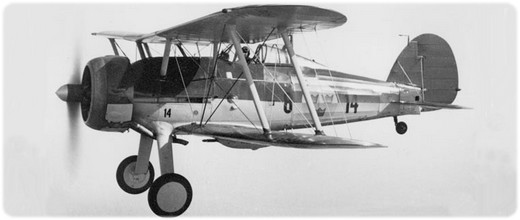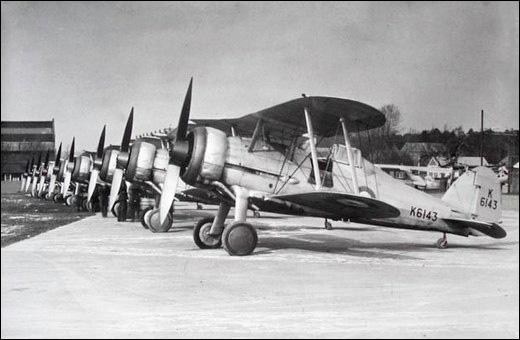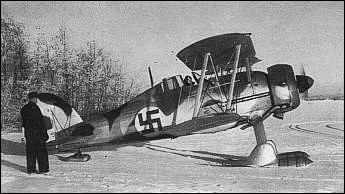 |
Gloster Gladiator
The Gloster Gladiator was the last of its kind, a bridge between old and new in fighter aircraft development. The pilots called it robust and a joy to fly, and had it not been for the change of times it would certainly have taken a bigger part in aviation history.
[ Top of page ]
History
The Gloster Gladiator first flew on September 12, 1934. The development was made by the Gloster Aircraft Company on its own initiatv, there was no order for a new aircraft. But when presented by chief designer Henry Folland and his team, the Royal Air Force was impressed and after try-outs placed an order for the new fighter. The Gladiator was also successful abroad and was part of many different air forces by the late 1930's, including the Swedish where it was designated J 8.
The Gladiator was derived from the Gloster Gauntlet and the type was called F.7/30. It was to be the last biplane to serve in the RAF but also its first fighter with an enclosed cockpit. It had an air cooled 850 hp Bristol Mercury radial engine with a top speed of just over 400 km/h. It was a graceful and well made biplane, but not before long it was superceded by more modern design in the form of the new generation monoplane fighters, not the least the RAF's own Hurricane and Spitfire.
 |
|
| Brand new Gladiators at Gloster Aircraft Company, before delivery to 72 Squadron, RAF. |
So, when World War Two broke out in September 1939, the Gloster Gladiator was hardly used at all on the British home front. Two squadrons tried to resist the German steam-engine rolling into France and Norway, but apart from that the fighter role in the RAF had been taken over by the Hurricane and Spitfire. However, in one field the Gladiator was more successful thanks to its slower speed and lower risk of running into modern opposition: as the carrier-based Sea Gladiator.
During the Finnish Winter War, the Gloster Gladiator was used with some effect against Soviet intruders. These fighters had Finnish markings but were lent from Sweden and flown by Swedish pilots, for this occasion volunteers in the temporary squadron F 19 Finland. It consisted of about thirty aircraft, twelve of them Gloster Gladiators. Nine made it back to Sweden after the armistice on March 13, 1940. During the 62 days of service, F 19 had lone responsibility for the entire region of northern Finland.
 |
A Swedish Gladiator in Finland 1940. The swastika roundel had nothing to do with nazism. It had been in use since 1918 when the Finnish air force received its first aircraft, a Thulin D, as a gift from count Eric von Rosen. He had painted this roundel, his symbol of fortune, on the aircraft. Incredibly and uncomfortably, it stayed on as the Finnish air force's official symbol until the end of the war in 1945. |
| This and the top picture are from the SFF archive. |
[ Top of page ]
Video
| A rather shaky video with some peculiar cuts, but starring a lovely aircraft: the Shuttleworth Collection's Gloster Gladiator, based at Old Warden. Crank up the volume at around 2:50 and enjoy the whooshing propeller... | |
[ Top of page ]